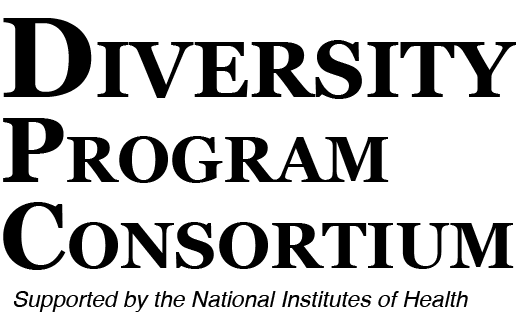



By Jenn Ho
First posted May 2016, Updated December 2019
While there are numerous definitions of mentoring, it is often described as an extended relationship with a more senior individual who has knowledge and/or experience that can be used for career success by a more junior individual. Unlike teaching, which has a well developed set of skills and approaches that have been systematically studied, mentoring tends to rely on the highly individualized practices of mentors which are only now being systematically studied for effectiveness (NASEM, 2019).
Mentoring is conventionally understood to be a critical component in the retention and academic success of underrepresented groups (URG) in science research. It is generally accepted that faculty support, motivation, and advising provided through mentoring meaningfully contribute to students’ increased social capital in STEM research as well as their identities as scientists. The support of students’ emotional development and helping students to learn essential tasks of science career development may also cultivate science self-efficacy, or students’ confidence in their abilities to function as scientists. Ultimately, faculty support and encouragement (Christe, 2013), and the exposure and experiences afforded by mentoring activities have been found to increase URG undergraduate academic achievement and persistence--benefits expected to carry over into graduate school attendance and success.
As a test of these associations, some research has been conducted to understand what beneficial student outcomes might result from participation in mentoring activities. For example, mentorship has been shown to improve the recruitment of URG students into research-related pathways (Hathaway, Nagda, & Gregerman, 2002; Gregerman, Lerner, Von Hippel, Jonides, & Nagda, 1998). Additionally, Black STEM faculty reported that the successful faculty mentoring interactions they experienced also shaped the ways they eventually mentored students of color, thus replicating positive mentoring practices (Griffin, Pérez, Holmes, & Mayo, 2010). However, our understanding of what specific aspects of mentoring lead to students’ career advancement and improved psychosocial support is largely anecdotal. This is particularly true with respect to underrepresented racial minority students, and other underrepresented student groups (URGs), pursuing careers in biomedical research. A larger evidence base is needed in exploring how URG students engage with their mentors.
Areas of needed study include how individual factors like race, ethnicity, and gender influence mentoring relationships, and what variations in mentoring effectiveness are associated with different forms of mentoring (e.g., peer mentoring, near-peer mentoring, or junior-senior faculty mentoring) (Pfund, Byars-Winston, Branchaw, Hurtado, & Eagan, 2016). Understanding the effects of mentoring approaches like culturally responsive mentoring is also an area
deserving of additional research. The National Academies of Science, Engineering, and Medicine recently issued a report summarizing research on mentoring within STEM fields (NASEM, 2019). Some of the recommendations include supporting multiple faculty mentorship structures, rewarding effective faculty-student mentorship, and recognizing and responding to social identities in mentoring relationships.
Building Infrastructure Leading to Diversity (BUILD) consists of a set of 10 linked awards granted to undergraduate institutions, each of which developed approaches intended to determine the most effective ways to engage students from diverse backgrounds in biomedical research, and to prepare students to become potential future contributors to the NIH-funded research enterprise. The National Research Mentoring Network (NRMN) includes projects designed to test models of mentoring, professional development, and other resources that can also contribute to improving the success of persons from diverse backgrounds in biomedical research. The participation of BUILD sites and NRMN in the collection of mentoring data, and the documentation of mentoring activities and interventions, should make a substantial contribution to this research need (McCreath, et al., 2017). Mentoring is related to a number of Hallmarks (outcomes), including STU-10 (students’ frequent receipt of mentoring), FAC 3-5 (faculty self-efficacy as a mentor and frequent mentoring), and INST-10 (institutional commitment to mentoring). As a consortium, the collaborative effort to measure, monitor, and track the qualities and effect of mentoring programs presents a unique opportunity to broadly evidence whether and how mentoring can possibly impact URG participation and persistence in biomedical research careers.
Updated by Krystle Cobian, November 2019
References
Christe, B. (2013). The Importance of Faculty-Student Connections in STEM Disciplines: A Literature Review. Journal of STEM Education: Innovations &
Research, 14(3), 22-26.
Gregerman, S. R., Lerner, J. S., Von Hippel, W., Jonides, J., & Nagda, B. A. (1998). Undergraduate student-faculty research partnerships affect student
retention. The Review of Higher Education, 22(1), 55-72.
Griffin, K. A., Pérez, D., II, Holmes, A. P. E., & Mayo, C. E. P. (2010). Investing in the future: The importance of faculty mentoring in the development of
students of color in STEM. In S. R. Harper & C. B. Newman (Eds.), Students of color in STEM (pp. 95–103). San Francisco, CA: Jossey-Bass
Hathaway, R. S., Nagda, B. A., & Gregerman, S. R. (2002). The relationship of undergraduate research participation to graduate and professional education
pursuit: An empirical study. Journal of College Student Development, 43(5), 614-631.
McCreath, H. E., Norris, K. C., Calderόn, N. E., Purnell, D. L., Maccalla, N. M., & Seeman, T. E. (2017). Evaluating efforts to diversify the biomedical
workforce: the role and function of the Coordination and Evaluation Center of the Diversity Program Consortium. In BMC Proceedings 11(12), 15-26. https://doi.org/10.1186/s12919-017-0087-4
National Academies of Sciences, Engineering, and Medicine (NASEM). (2019). The science of effective mentorship in STEMM. Washington, DC: The
National Academies Press. https://doi.org/10.17226/25568.
Pfund, C., Byars-Winston, A., Branchaw, J., Hurtado, S., & Eagan, K. (2016). Defining attributes and metrics of effective research mentoring relationships.
AIDS and Behavior, 20(2), 238-248.
Suggested citation
Ho, Jenn. (2019). Understanding the Effects of Faculty Mentoring. Literature Brief. Los Angeles, CA: Diversity Program Consortium (DPC) Coordination and Evaluation Center at UCLA. https://www.diversityprogramconsortium.org/